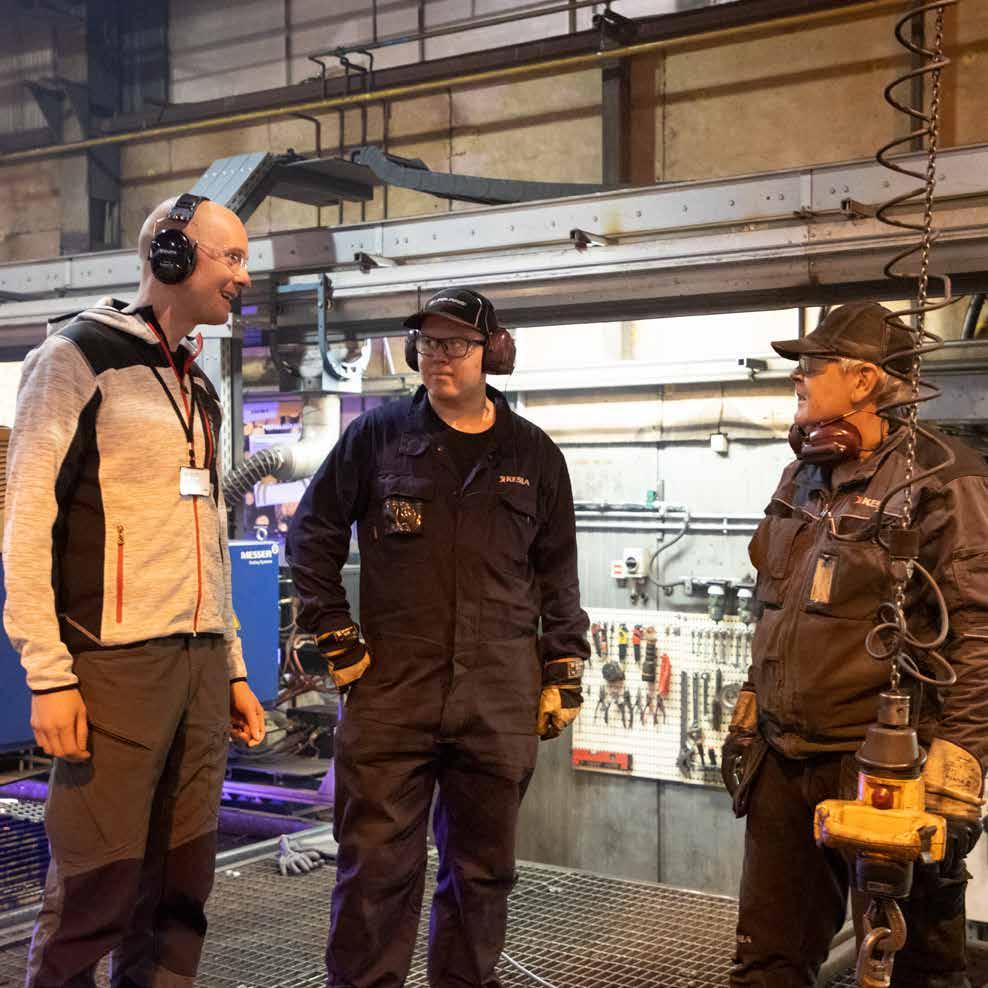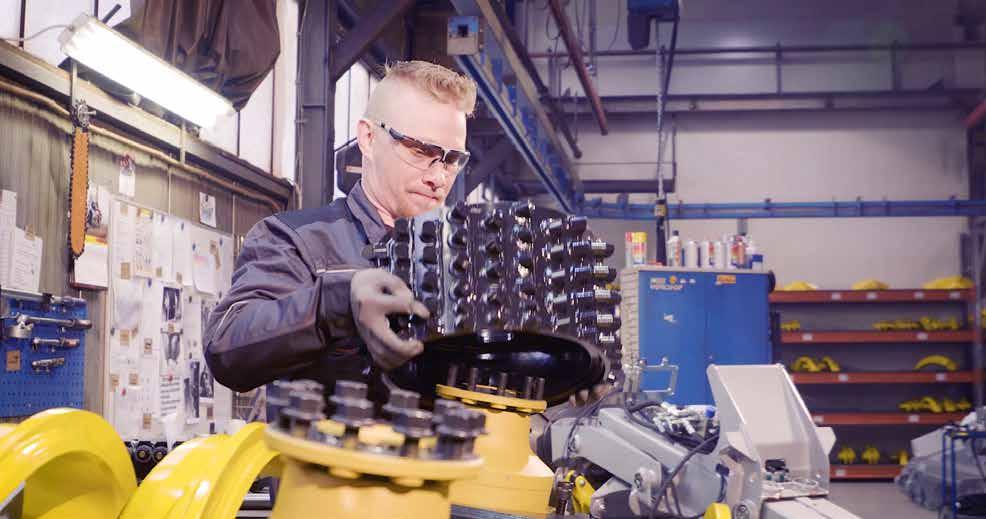
4 minute read
Team player with entrepreneurial attitude
Mika-Pekka Tiainen (left) and Part Production Operators Oskari Kostamo and Juha-Pekka Neuvonen.
When Mika-Pekka Tiainen concluded his studies in mechanical engineering and production at Mikkeli University of Applied Sciences in spring 2007, he aimed for Kesla. The door to the dream job opened. At the same time, a unique opportunity opened for entrepreneurship and the accumulation of knowledge-based capital.
Mika-Pekka Tiainen became Part Production Manager at Kesla’s Kesälahti factory. Years passed. Sometimes Tiainen also worked as the plant’s Occupational Safety Manager. A job at a forest technology company was an important part of life, but at the same time the idea of his own farm business percolated – he was a farm boy from Parikkala, after all. “At first, my farm business had 40 dairy cows and around 80 hectares under cultivation. We were quickly faced with a market situation where the price of milk fell. The alternatives were to invest a few million euros to grow the farm or to give up the cows.” Instead of heavy investments, Tiainen shifted the farm to cultivation – today, there are cumin, oats and rapeseed growing in the fields. In addition to cultivation, he went to work in agricultural trade for a few years. Tiainen did sales work and also acted as deputy CEO of Savonlinnan maatalouskauppa Oy until he decided to call Arvo Rönkkönen, the then Factory Manager of the Kesälahti factory. Rönkkönen welcomed Tiainen, who saw entrepreneurship and business from new perspectives, back to Kesla. Thus, in 2017, the man joined the Kesla team again – even more experienced, entrepreneurial and development-oriented.
Spirit of cooperation
Kesla Oyj’s management structure was modified in 2017. In the new organisational model, designers, sellers and production are welded together more firmly. Tiainen believes that the organisational restructuring is reflected in everyday life in even better consideration of the customer’s needs.
The company established its own business organisations for truck-mounted and industry cranes, logging equipment and tractor attachments. The organisational change aims at a deeper understanding of the market, rapid response to customer needs, strong management of product packages and further growth. Kesla’s harvester heads, tractor attachments and chippers are manufactured in Kesälahti. The production of plate cut-outs and edged parts has also been centralised in Kesälahti. As Production Manager, Tiainen is responsible for part production and welding. From the way Mika-Pekka Tiainen describes Kesla’s current approach, the management culture seems to be servant leadership rather than top-down management. In practice, servant leadership is reflected in creativity and confidence-building everyday activities, in which every member of the work community can influence the results of the work. The common goal is a satisfied customer, and success requires everyone’s work input. Discussions with Kesla employees show that the common goal has been genuinely internalised.
Tiainen confirms that this message from the CEO has been embraced by everyone.
Knowledge-based capital
At the end of the day of the interview, Mika-Pekka Tiainen tells us that he is going to harvest oilseed rape in the evening. The work of his own farm is, on the one hand, a good counterbalance to daytime work at the machine engineering workshop and, on the other hand, the accumulation of the knowledge-based capital needed for his day job. “It’s kind of like benchmarking. I see how big a company works and I can apply those principles in my own entrepreneurship. In a small company, for example, the laws of economics are translated into an understanding, which, in turn, gives a good perspective when looking at the whole as a production manager.” In its interim report in August 2019, Kesla announced its investment plans of €5 million. The aim of the investments is to increase the accuracy and automation level of the core processes of part manufacture. The Kesälahti factory’s share of the total investment is about one million, to be spent on a new laser cutting line. Studies on the investment have been carried out for a long time, and Tiainen is inspired by the responsibility for the investment:
Kesälahti attraction
Around a hundred people work at the Kesälahti factory. The commuter area is extensive, ranging from Joensuu to Tohmajärvi and from Kitee to Savonlinna and Parikkala.
Tiainen is also satisfied with Kesla’s way of cooperating with educational institutions. Kesla employs student trainees, students from vocational schools and universities of applied sciences, as well as diploma workers. Another entry route is apprenticeship training.

Loaders, trailers, chippers and harvester heads are manufactured in Kesälahti. The photo shows harvester head assembly by Tuukka Hirvonen. Kesälahti production makes chippers, tractor forest equipment and harvester heads. The photo shows Tuukka Hirvonen assembling a harvester head.










